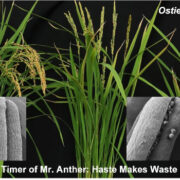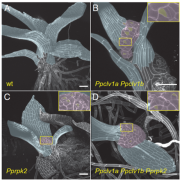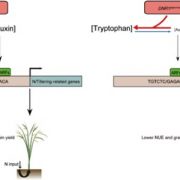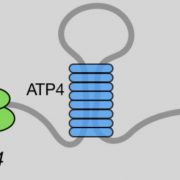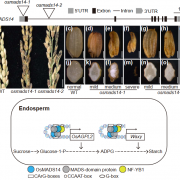Cytokinin signaling determines rice panicle size
Chun, Fang, Savelieva, Lomin et al. explore the mechanism by which cytokinin signaling influences the size of rice panicle.
https://doi.org/10.1093/plcell/koad257
By Yan Chun (淳雁), and Xueyong Li (李学勇)
National Key Facility for Crop Gene Resources and Genetic Improvement, Institute of Crop Sciences, Chinese Academy of Agricultural Sciences, Beijing, China
Background: The plant hormone cytokinin (CK) promotes plant meristem initiation and maintenance. A high level of CK in rice can enhance meristem activity and enlarge panicles, while a low level of CK can cause premature termination of the meristem and result in smaller panicles. The CK signal is transmitted from histidine kinase (HK) receptors to phosphotransfer proteins (HPts) and response regulators (RRs). The roles of several CK receptors and RRs in rice panicle development have been partially revealed, but their regulatory relationships and downstream factors remain unclear.
Question: Which RR receives the CK signal from the CK receptor OHK4? Which genes controlling panicle size are influenced by RRs? Are there any regulators that affect OHK4?
Findings: We discovered that a loss-of-function mutation of OHK4 disrupts CK signaling and reduces rice panicle size. The phosphorylation level of the type-B RR OsRR21 is dependent on OHK4. Overexpression of OsRR21 partially rescued the short panicle phenotype of the ohk4 mutant. IDEAL PLANT ARCHITECTURE1 (IPA1)/WEALTHY FARMER’S PANICLE (WFP), encoding a positive regulator of rice panicle size, is directly activated by OsRR21. Interestingly, OHK4 expression is upregulated in the gain-of-function mutant ipa1-D but downregulated in loss-of-function ipa1 mutants. Genetic and molecular analyses revealed that IPA1/WFP regulates OHK4 through interactions with two TCP transcription factors. Therefore, OHK4, OsRR21, and IPA1/WFP form a positive feedback loop to control meristem activity and panicle development in rice.
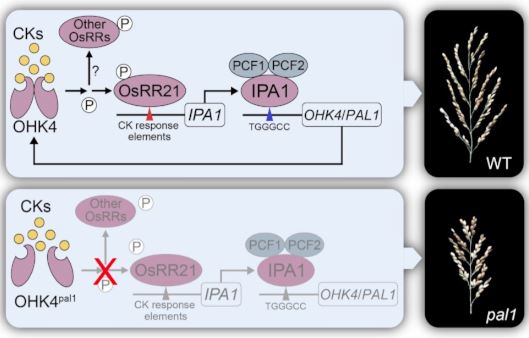
Next steps: Although the connection between OHK4 and OsRR21 has been revealed, we still do not know which histidine phosphotransfer proteins (HPts) act as intermediates in this process. The relationship between OHK4 and other RRs is also unclear. Whether OsRR21 regulates other meristem or panicle regulators is quite an intriguing question.
Yan Chun, Jingjing Fang, Ekaterina M. Savelieva, Sergey N. Lomin, Jiangyuan Shang, Yinglu Sun, Jinfeng Zhao, Ashmit Kumar, Shoujiang Yuan, Xue-Feng Yao, Chun-Ming Liu, Dmitry V. Arkhipov, Georgy A. Romanov, and Xueyong Li. (2023). The cytokinin receptor OHK4/OsHK4 regulates inflorescence architecture in rice via an IDEAL PLANT ARCHITECTURE1/WFP-mediated positive feedback circuit. https://doi.org/10.1093/plcell/koad257


